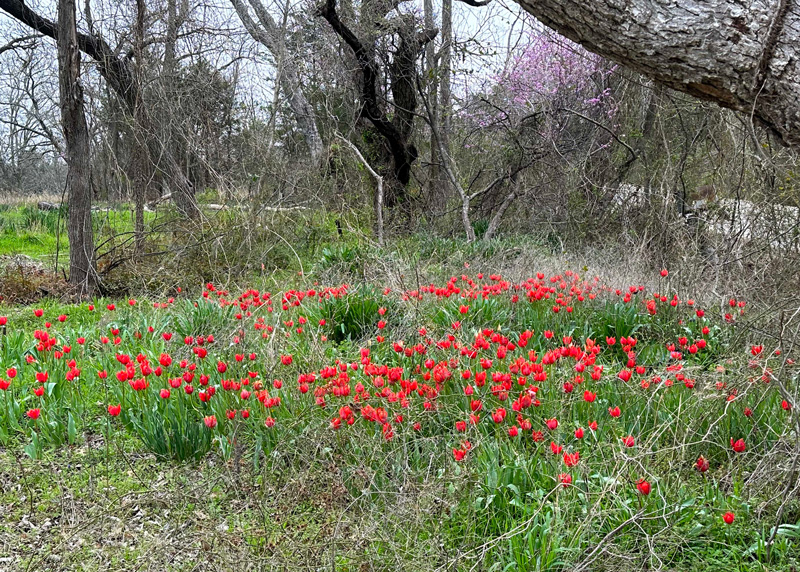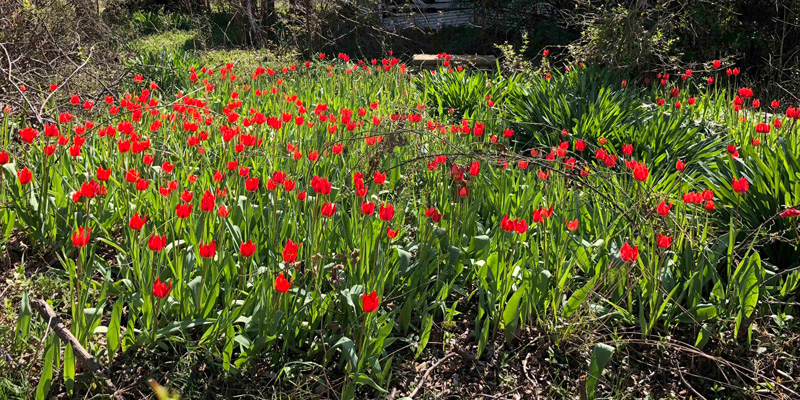Texas tulips are blooming again

Drive through old neighborhoods and past abandoned homesites in the Blackland Prairie along and east of I-35 in North Central Texas and you’re likely to come across masses of this beautiful little tulip in flower right now.
It’s Tulipa praecox, aptly named by locals as “Texas” tulip since it’s one of the few types that really seems to thrive in at least part of the Lone Star State.
To hear Chris Wiesinger speak (Southern Bulb Company) about this species tulip, it’s a challenge for him in his production farm’s sandy loam soils. It seems the pocket gophers share the soils with his bulbs, and they happen to love them. Chris sells bulbs as often as he can build up a supply.
I found this short story about four native species, T. praecox being one of them, online. It’s from “Greek Reporter” six years ago, and it was entitled “The Beautiful ‘Lalades,’ The Wild Tulips of Chios.” That’s one of the Greek Isles, and the short video they have on this web page is charming. It shows the four species growing in their natural hillside settings. You’ll enjoy seeing them in nature.
There are many good things about growing this tulip in your Texas home garden, but chief among them is the fact that it naturalizes. That means it will establish itself as a colony, multiply, and come back year after year. The bulbs don’t require the “pre-chilling” that large hybrid tulips do to produce flowers on tall, upright stems.

Why you want this one…
There are several great things about growing this tulip in your Texas home garden:
• It “naturalizes,” meaning that it establishes itself in colonies and comes back year after year in greater numbers.
• It doesn’t require “pre-chilling.” Where the large hybrid types must be given 45 days at 45 degrees before they can be planted around Christmas, this one can be left in the ground from one year to the next.
• Oh, and did I mention that it’s beautiful? Bright red blooms on 16-inch stems produced in early March every year without fail.

The only downside with this lovely bulb is that it’s difficult to find. Southern Bulb Company offers it as their supplies allow, but it is a bit pricey. But at least now we know why, and we know to protect our own crop if we have it.
Or, you may be lucky enough to find an abandoned old homesite where you could get permission to dig a few for your own garden.
If you’re lucky enough to come across bulbs this fall, plant them 3-4 in. deep and the same distance apart. It won’t hurt to prepare the soil a bit to help them become established, but don’t feel like you have to baby them.
As Chris Wiesinger says in his video, they’re happy to grow in clay soils. Not many bulbs are willing to step up and say that.
